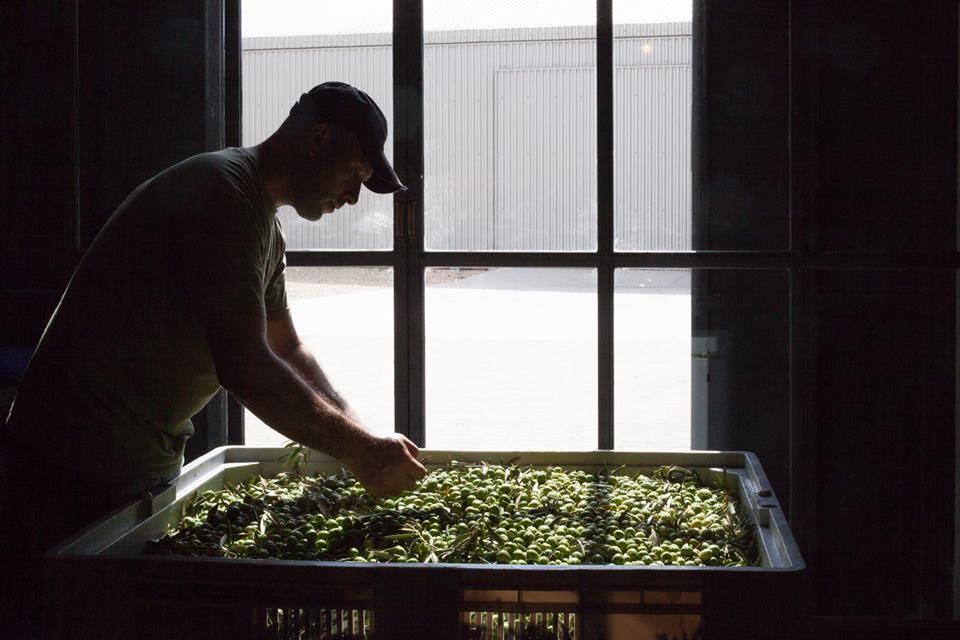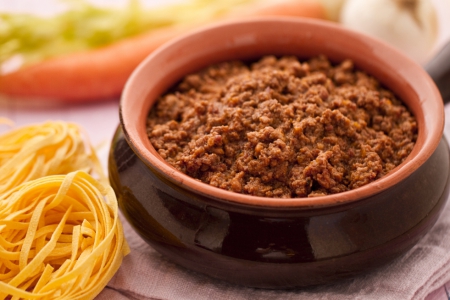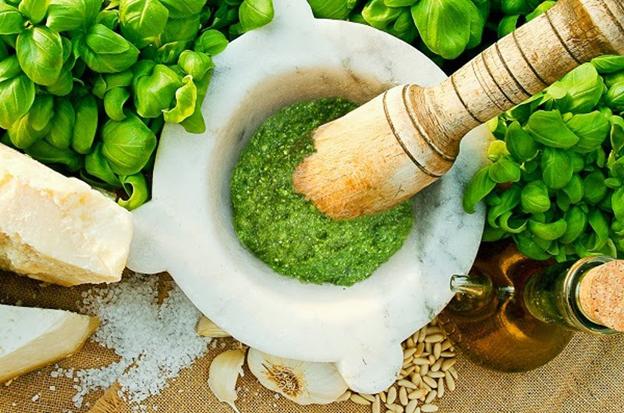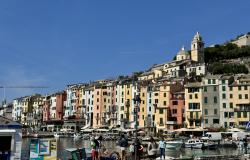Italy is well known for its superb range of food, but the secret of its success is to provide the right accompaniment. Using a wealth of carefully selected ingredients, Italian sauces and condiments have been seen stretching far back through history. Remaining popular today, these condiments and sauces are both ideal extras for dishes made in Italy and around the world.
Agliata: A 'Ligurian classic'
That's the description that has been attributed to Agliata, a condiment that is used to go with meat or fish dishes – in particular, boiled or grilled meats. Look up the 13th century and 14th century era cookbooks, Liber de Coquina and The Venetian, and you'll find that Agliata can be served with all kinds of meat.
This condiment can be traced back to the days of Ancient Rome, where it was paradoxically regarded as a sauce that was sampled by different classes. On the one hand, peasants enjoyed Agliata, but on the other, it was a food accompaniment served to the upper classes.
Agliata blends together bread crumbs, vinegar, garlic, olive oil, salt and pepper. One of the most interesting elements is the bread crumb – these are vinegar-soaked, with the vinegar then squeezed out. Garlic is then added into the crumbs, and in order to eliminate the risk of the ingredients separating, the mixture is constantly whisked while the olive oil is added – all resulting in a very distinctive and tasty garlic-based sauce.
Olive Oil
One of the most popular accompaniments to a meal continues to endure. Olive oil – a staple of salad coatings or fried foods – remains incredibly popular in Italy.
A recent study of 2016/2017 Italian olive oil production saw 182,300 tonnes produced. Notable regions of production include Apulia, a location that includes the Plain of Olive Trees. Other notable sources of olive oil include Calabria, Tuscany, Florence, Lucca and Siena.
Olive oil is a condiment that was especially popular in Roman times – not just for cooking, but in trade.
Having conquered countries such as Egypt and Greece, Rome's use of olive oil in trade increased, as greater quantities of olive trees were planted throughout the whole Mediterranean basin. The double whammy of high quality oil and competitive prices boosted trade levels.

Over time, olive oil production was boosted further by new innovations such as the olive press, trapetum, and a hydraulic pressing system. With such inventions boosting olive oil production, so trade grew – and that keen interest in this condiment remains in Italy today.
Ragù alla Bolognese
All around the world, pasta dishes are loved and eaten by millions. Part of the appeal is the sauce – Ragù alla Bolognese – or Bolognese Sauce, a legendary meat-based Italian food accompaniment.
Whatever your choice of pasta – spaghetti, tagliatelle, lasagne... bolognese sits even more comfortably than sinking down into a cosy armchair. Its origins can be traced back to the 1800s, when a cookbook recipe was published by Pellegrino Artusi.
This had arisen from the period that Artusi had spent in Bologna in the mid 1800s. Artusi's recipe was for Maccheroni alla bolognese, which sees the embryonic stages of today's incarnation. It includes lean veal fillet, pancetta, carrots, onions and butter – further ingredient suggestions include chicken liver, truffle, dried mushrooms, and cream for extra smooth texture.

Over the years, Artusi's recipe has been augmented and adapted, with a number of different kinds of bolognese around today. Common meats include pork and beef, which can be braised, sautéed or sweated. Vegetables used include carrots, celery and onions – with other ingredients such as milk or wine adding to the flavour.
Marinara
If bolognese is commonly linked with tomatoes – especially outside Italy – here comes another example. Marinara sauce brings together tomatoes, herbs, garlic, onions... and like bolognese, it can be made whichever way you wish. Other popular ingredients of Marinara sauce can include spices, olives, anchovies, capers and a slug of wine.
Marinara sauce is used with meat and fish dishes, along with pasta dishes like spaghetti and vermicelli. While many stories exist as to the origins of this sauce, a tomato-based sauce was originally documented in the 17th century by chef, Antonio Latini. Two volumes of Latini's cookbook, Lo Scalco alla Moderna, included a variation on this recipe. Another notion put forward is the this kind of sauce was made for Neapolitan sailors coming home to their wives.
Vincotto
Take two much-loved elements of Italy: Food and Wine. Connect the two, and you've got the perfect recipe in the form of Vincotto.
Vincotto is what's known as cooked wine – more precisely, slow cooked and reduced to the point where it becomes a thick, sweetly tasted paste. It can be used to accompany dishes such as poultry and roast meat, risotto and cheeses. Another alternative is to use this as a sweet condiment.
Non-fermented, red wine grapes are used in the creation of this sauce, such as Malvasia Nera, Negroamaro and Primitivo. Common Italian locations to favour this flavour include Emilia-Romagna, Marche, Veneto, Lombardy – and also Apulia. The Apulian grapes are known for their high levels of polyphenol, which are very good for the health, functioning as antioxidants.
Pesto
Another iconic sauce popular in Italy is Pesto. To be more exact, the sauce is known in Italy as Pesto alla Genovese, referring to its Genoa-based origins. The name of the sauce refers to the pounding or crushing of ingredients – pestâ in Genoese, which is a past tense variant on the pestare verb.

The ingredients used in the preparation of this sauce are basil leaves, hard cheese, garlic, pine nuts and salt, with a dash of olive oil to the crushed mixture. Traditionally, these elements are ground in a marble mortar with a wooden pestle.
The history books tell of past examples of Pesto predecessors – including the Roman variant called moretum, which also crushed ingredients similar to Pesto (including cheese, herbs, and garlic). Moretum was part of Roman age cuisine, and is mentioned in a collection of poems called the Appendix Vergiliana. Meanwhile, the big selling point of today's kind of Pesto, basil, can be first found in gastronomist, Giovanni Battista Ratto's 1863 book, La Cuciniera Genovese.





